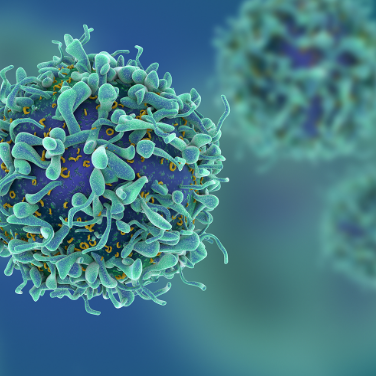Successful Cell Therapy Manufacturing
By Iva Fedorka
Cell- and gene-based therapies are transforming cancer treatment. In the United States and Europe, cell therapies debuted with the use of chimeric antigen receptor (CAR) T-cell therapies, which have become the standard of care for some types of blood cancers.
Creating these therapeutics involves collecting T-cells from patients or healthy donors, genetically modifying, and then administering them to patients to rid the body of cancer cells.
However, producing these products presents new challenges. The first cellular therapies were developed without considering the regular production of these advanced therapy medicinal products (ATMPs).
The Manufacturing Process
Cell therapy manufacturing begins in an apheresis or clinical facility where the cells are collected and ends when the product is administered to the patient. Between those steps, a complex series of procedures takes place.
This process is very different from traditional pharmaceutical manufacturing. Most pharmaceutical products start with standardized materials and produce a fully characterized product. Cell therapy provides patients with personalized products based on their diseases, genetics, and medical histories, adding complexity and variability to their production.
Manufacturing Challenges
Manufacturers must produce a consistently safe and effective living product from highly variable living source material. They must produce consistent quality and performance; comply with regulatory and documentation requirements; maintain safety and quality control; manage supply chains and logistic; and develop bioprocessing scale-up and scale-out capabilities.
The success of producing an ATMP depends on the raw materials, manufacturing process controls, and safety and quality control procedures.
"They must produce consistent quality and performance; comply with regulatory and documentation requirements; maintain safety and quality control; manage supply chains and logistic; and develop bioprocessing scale-up and scale-out capabilities."
Using Appropriate Raw Materials
Perform a risk assessment of your raw materials to determine which ones may need to be altered or replaced. Choose raw materials that meet the standards and purity requirements for the end-product for all stages of development and manufacturing.
The responsibility for raw material quality and purity is shared by the supplier and manufacturer. Assess materials according to source and identity, purity, safety, and suitability as specified by USP <1043> Ancillary Materials (AM) for Cell, Gene, and Tissue-Engineered Products.
The Standard classifies materials as:
- Tier 1—low-risk, highly qualified, and regulated products
- Tier 2—low-risk, well-characterized, GMP, designed for use as AMs
- Tier 3—moderate risk, not intended for use as AMs
- Tier 4—high risk, biologically variable or contain harmful impurities and/or animal materials
As often as possible, choose Tier 1 and Tier 2 materials. Work with your supplier to identify alternative products for Tier 3 and Tier 4 materials, including substitutions or recombinant versions of animal components, additional material characterization testing, traceability documentation, and upgraded manufacturing methods like aseptic filling.
Finding Manufacturing Solutions
Producing cell therapies is labor-intensive, subject to contamination at multiple points, complex, difficult to monitor, and has zero failure tolerance. Verify that any equipment and instruments for “research use only” (RUO) or for in vitro diagnostics (IVD) is suitable for producing injectable therapeutics.
Look for ways to introduce modular or multifunctional equipment and instruments, closed systems, and automation to help address these issues. Some manufacturers have developed products specifically designed for cell therapy manufacturing, including direct replacements for RUO or IVD versions.
Characterization and Product Release
Cell therapy products have a short shelf life and cannot be fully characterized or purified pre-administration. However, some tests are essential for lot release and regulatory compliance for chemistry, manufacturing, and controls (CMC).
The U.S. Food and Drug Administration (FDA) Center for Biologics Evaluation and Research (CBER) Office of Tissues and Advanced Therapies (OTAT) oversees CMCs. The FDA requires information for Investigational New Drug Applications (INDs), including safety, identity, quality, purity, and strength/potency testing.
Chain of custody and identity must also be maintained throughout the manufacturing process. Failure to properly document and control sample provenance can have serious patient consequences.
The Future of Cell and Gene Therapies
A new generation of CAR T-cell therapies has the potential to identify solid tumor cells in patients with prostate, breast, stomach, rectal, and other non-hematological malignancies. Stem cell therapies may one day be used to treat autoimmune, Alzheimer’s, and Parkinson’s diseases.
Visit fishersci.com/production to learn more about Fisher Scientific production products and value-added services.
Iva Fedorka is a Thermo Fisher Scientific staff writer.



